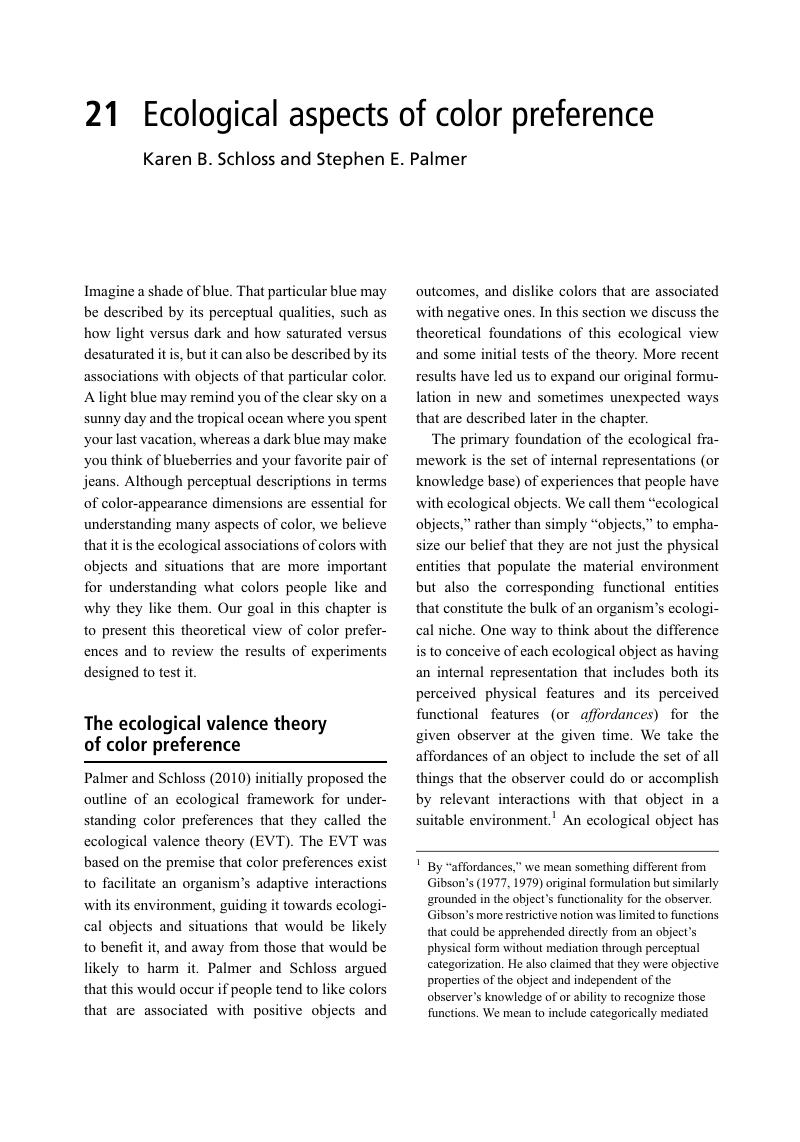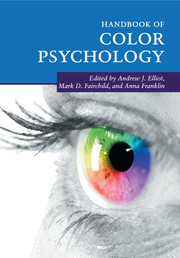Book contents
- Handbook of Color Psychology
- Handbook of Color Psychology
- Copyright page
- Contents
- Figures
- Tables
- Contributors
- Foreword
- Part I Introduction
- Part II Foundations: basics of color science
- Part III Development of and differences in color vision
- Part IV Color categorization
- Part V Color symbolism and association
- Part VI Color preferences
- 21 Ecological aspects of color preference
- 22 Biological, cultural, and developmental influences on color preferences
- Part VII Color effects on psychological and biological functioning
- Part VIII Psychological effects on color perception
- Part IX Color phenomena
- Index
- References
21 - Ecological aspects of color preference
from Part VI - Color preferences
Published online by Cambridge University Press: 05 April 2016
- Handbook of Color Psychology
- Handbook of Color Psychology
- Copyright page
- Contents
- Figures
- Tables
- Contributors
- Foreword
- Part I Introduction
- Part II Foundations: basics of color science
- Part III Development of and differences in color vision
- Part IV Color categorization
- Part V Color symbolism and association
- Part VI Color preferences
- 21 Ecological aspects of color preference
- 22 Biological, cultural, and developmental influences on color preferences
- Part VII Color effects on psychological and biological functioning
- Part VIII Psychological effects on color perception
- Part IX Color phenomena
- Index
- References
Summary

Information
- Type
- Chapter
- Information
- Handbook of Color Psychology , pp. 435 - 453Publisher: Cambridge University PressPrint publication year: 2015
References
Accessibility standard: Unknown
Why this information is here
This section outlines the accessibility features of this content - including support for screen readers, full keyboard navigation and high-contrast display options. This may not be relevant for you.Accessibility Information
- 3
- Cited by
